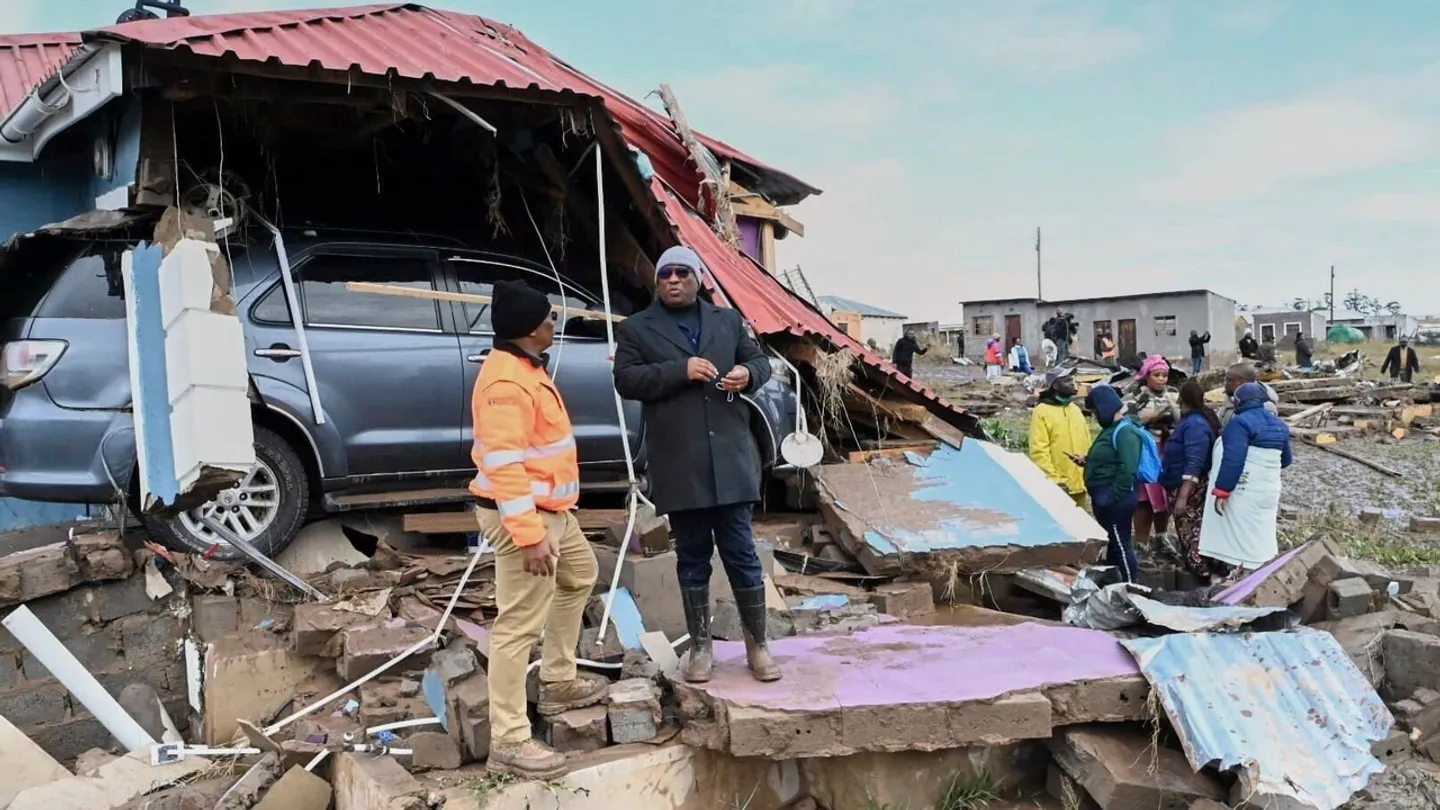Severe flooding has devastated South Africa’s Eastern Cape, leaving at least 49 people dead and thousands more displaced as torrential rains overwhelmed homes, infrastructure, and entire communities. What began as a seasonal downpour escalated into a regional disaster by mid-June 2025, prompting a large-scale emergency response and raising urgent questions about climate resilience, infrastructure capacity, and crisis preparedness in the country’s southeastern heartland.
The worst-hit areas include Port St. Johns, Lusikisiki, and Coffee Bay—popular tourist spots and densely populated rural settlements that experienced unprecedented rainfall over just a few days. Rivers overflowed rapidly, washing away bridges, roads, and homes. Satellite images and on-the-ground reports show entire neighborhoods submerged, with rescue operations continuing under treacherous conditions. Officials described the scenes as “catastrophic,” with helicopters airlifting stranded families while others were forced to climb rooftops to escape rising waters.

Read Also: Fela Grammy Hall of Fame Honor

Search and rescue missions are ongoing, but heavy mudslides and damaged roads have made access to remote communities extremely difficult. Local NGOs and emergency services have set up temporary shelters in schools and churches, but these are already overcrowded and under-resourced. The provincial disaster management team has confirmed that over 2,500 families have been displaced, many of them losing everything in the floods.
Eastern Cape Premier Oscar Mabuyane has declared a provincial state of disaster, urging the national government and international agencies for urgent support. President Cyril Ramaphosa expressed deep sorrow over the loss of life and announced that the South African National Defence Force (SANDF) would be deployed to assist with evacuations, logistics, and food distribution. Relief efforts are also being coordinated through the South African Red Cross, Gift of the Givers, and local volunteer networks. The flood disaster has also exposed the fragile state of the Eastern Cape’s aging infrastructure. Years of underinvestment and delayed maintenance left drainage systems clogged and bridges vulnerable. Environmental experts have warned for years that the province’s topography—marked by mountains, rivers, and informal settlements—makes it particularly prone to flood risks, especially under changing climate conditions.
Weather analysts have confirmed that the downpour was intensified by a strong La Niña pattern and record sea surface temperatures in the Indian Ocean, conditions consistent with the increased frequency of extreme weather events driven by global warming. Scientists from the University of Cape Town’s Climate System Analysis Group have emphasized that climate adaptation needs to be urgently prioritized, especially in vulnerable provinces like the Eastern Cape. The humanitarian impact of the floods has also sparked debate about the government’s disaster readiness. Civil society groups are questioning why flood warnings issued by the South African Weather Service were not followed by swift local evacuation plans. Community leaders have called for a long-term, community-based flood resilience program, including early warning systems, flood-proof housing, and emergency training at the ward level.
Schools in affected districts have been shut down indefinitely, while farmers in the region have reported extensive crop losses, dealing a blow to both local food security and livelihoods. Eastern Cape is one of South Africa’s poorest provinces, and many families rely on subsistence farming. With roads destroyed, transporting essential supplies—food, water, and medicine—has become a logistical nightmare. The crisis has drawn global attention, with aid pledges from international partners starting to trickle in. But the road to recovery will be long. Experts warn that unless systemic infrastructure and environmental reforms are put in place, disasters like these will only grow more frequent and more deadly. As the Eastern Cape mourns its dead and begins the painful process of rebuilding, the floods of 2025 may well serve as a watershed moment—a grim reminder of nature’s force, and a call to action for sustainable resilience and climate-conscious development in South Africa.



